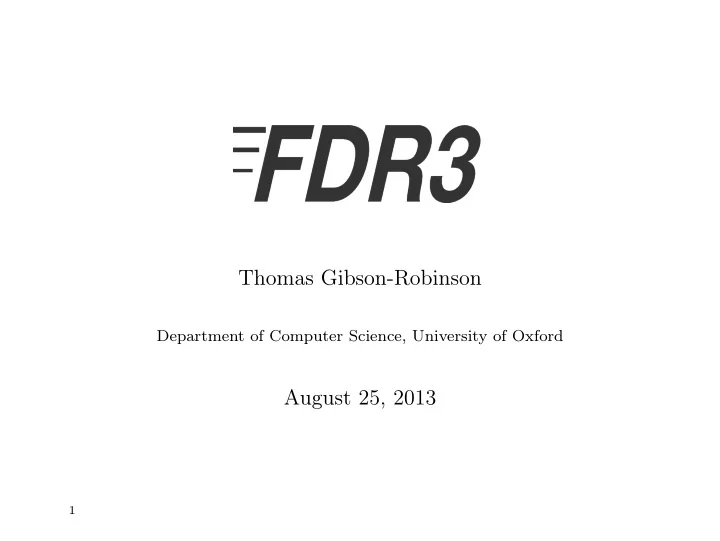

Thomas Gibson-Robinson Department of Computer Science, University of Oxford August 25, 2013 1
FDR 3.0 FDR3, which has been under development for around two years has: � Dramatically improved error messages thanks to a built-in typechecker (no more <> is not a set ). � A completely redesigned user interface with an interactive prompt (for experimentation), an integrated version of ProBE and errors displayed in sensible places (i.e no longer hides its error messages in a hidden window )! � Is able to generate better labelled-transition systems for a large class of CSP processes (primarily those involving ; and Θ A ) than FDR2, resulting in decreased compilation time. 2
Performance The main breakthrough in FDR3 is its performance for checks done in the traces and failures models. On a single core FDR3 will typically outperform FDR2 by a factor of 2.5. FDR3 also includes a parallel mode that, on desktop machines at least, scales almost linearly as the number of cores increases. To complete a series of checks (that includes Dining Philosophers which has around 4 million states and Solitaire which has 170 million states): FDR2: 2695s FDR3 Single Threaded: 1033s FDR3 Parallel: 312s 3
Demonstration 4
Availability FDR3.0-beta-4 is available from https://www.cs.ox.ac.uk/projects/fdr/ . A full release will follow by the middle of October. Part of FDR3 (consisting of the parser, type-checker and evaluator) has been open-sourced and is available from https://github.com/tomgr/libcspm . 5
Recommend
More recommend